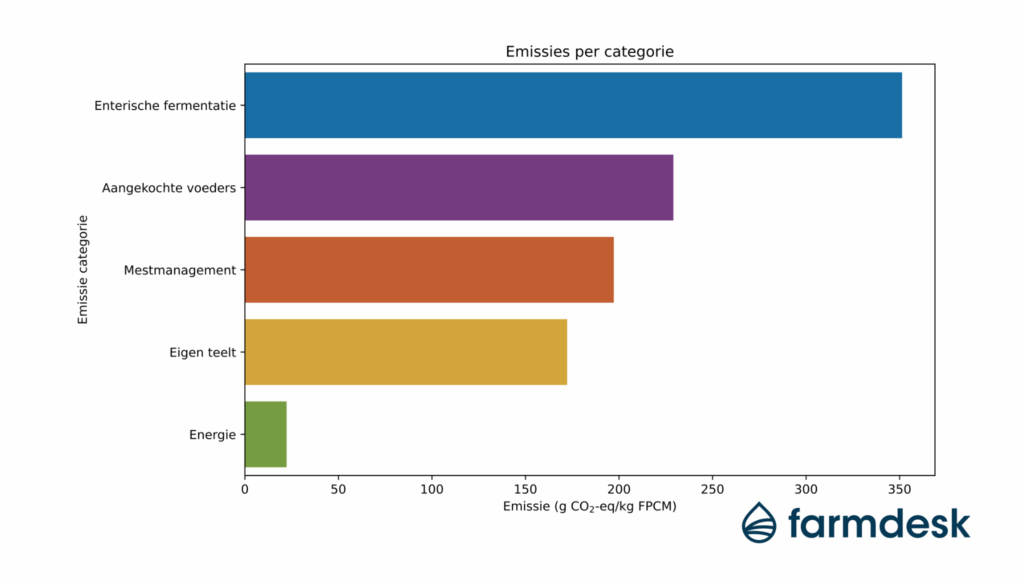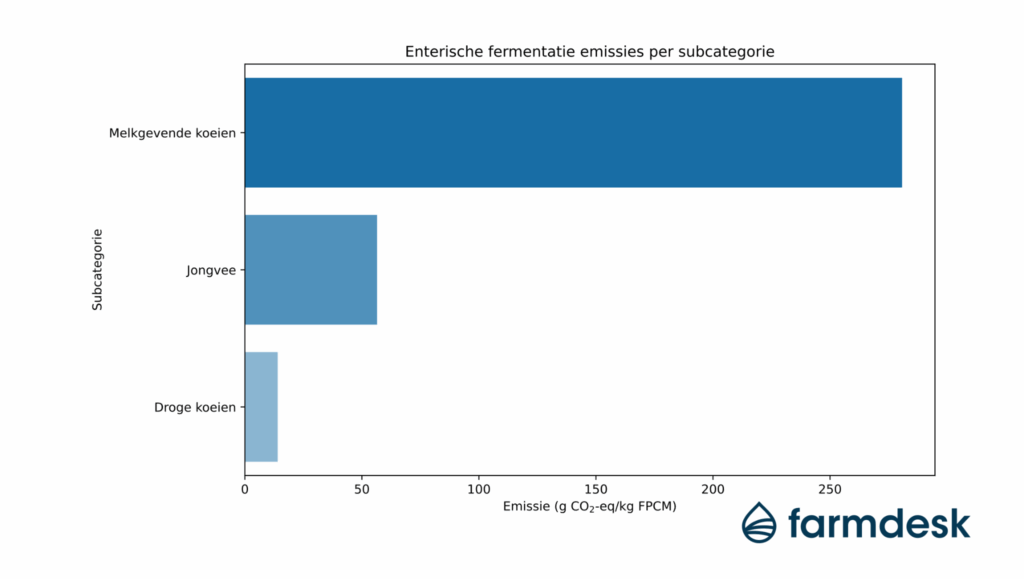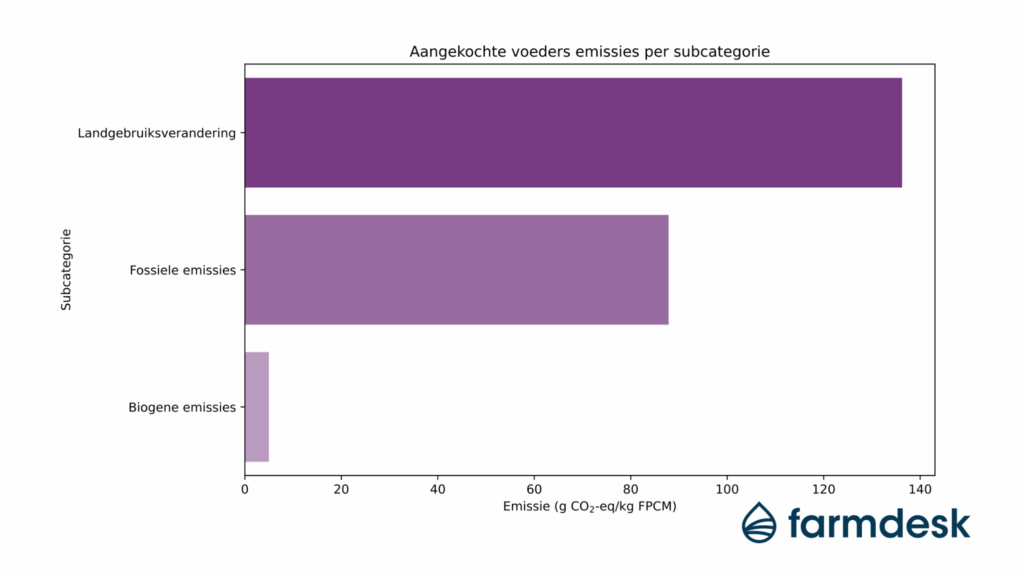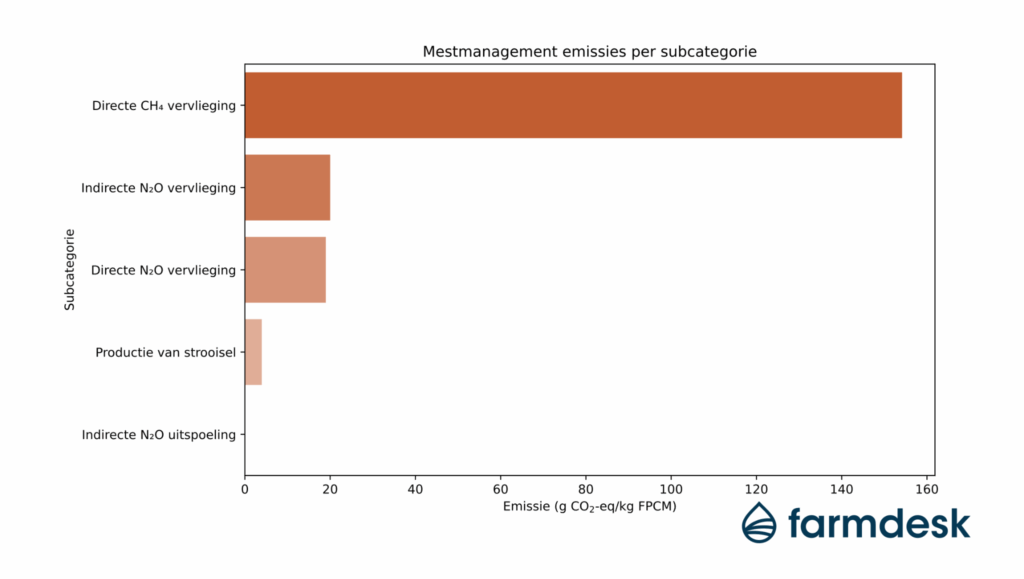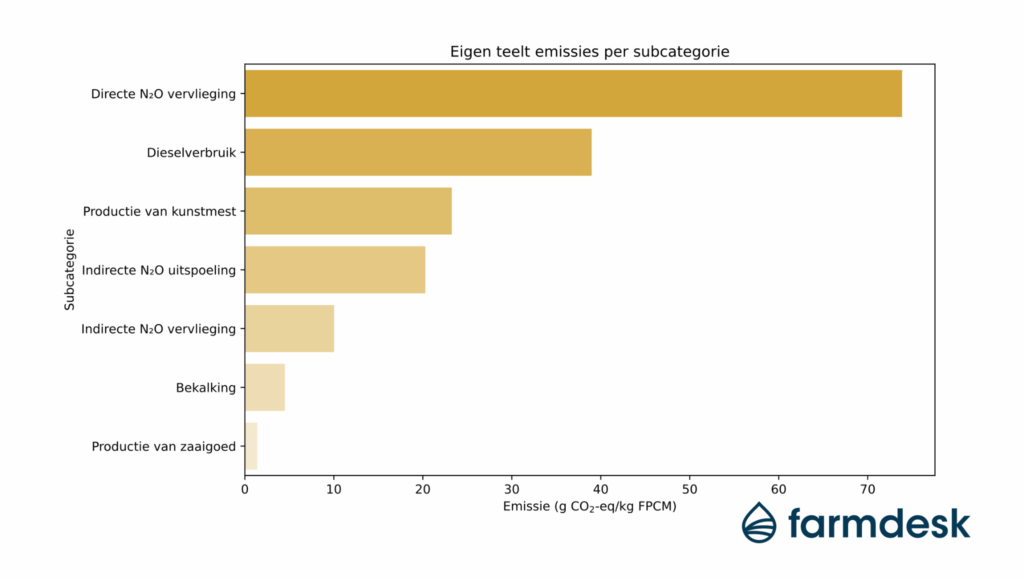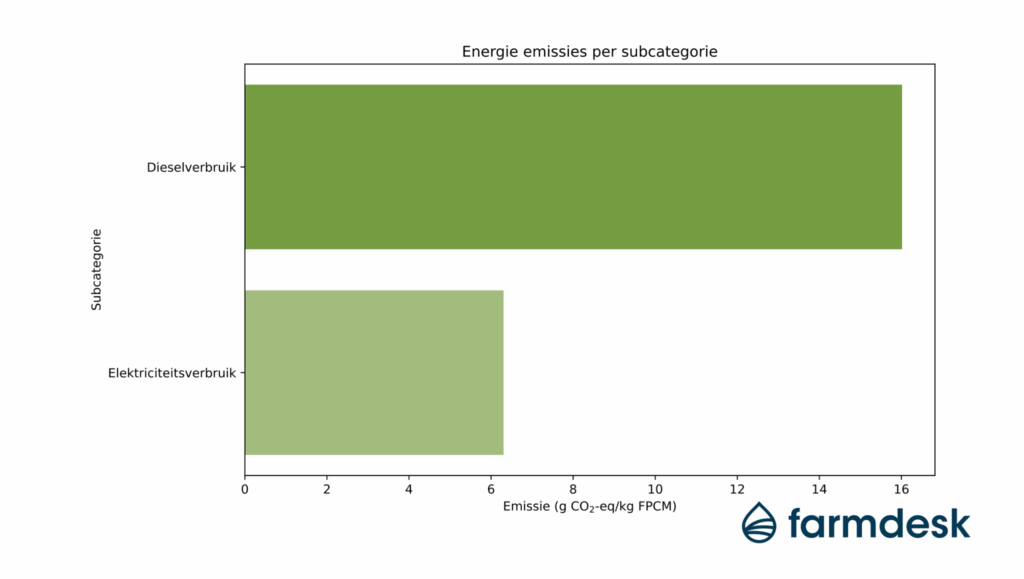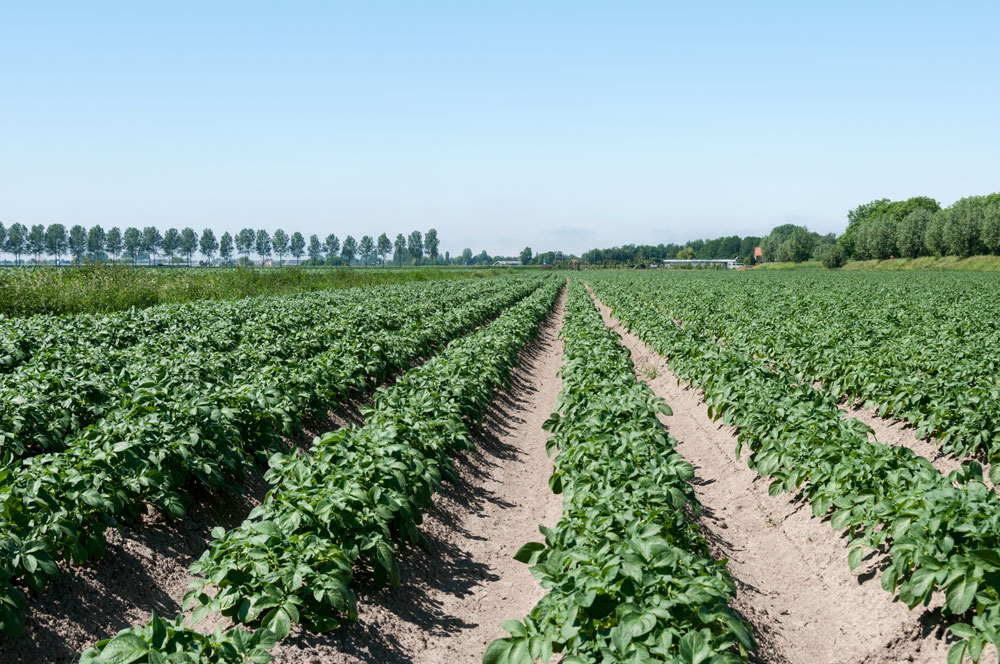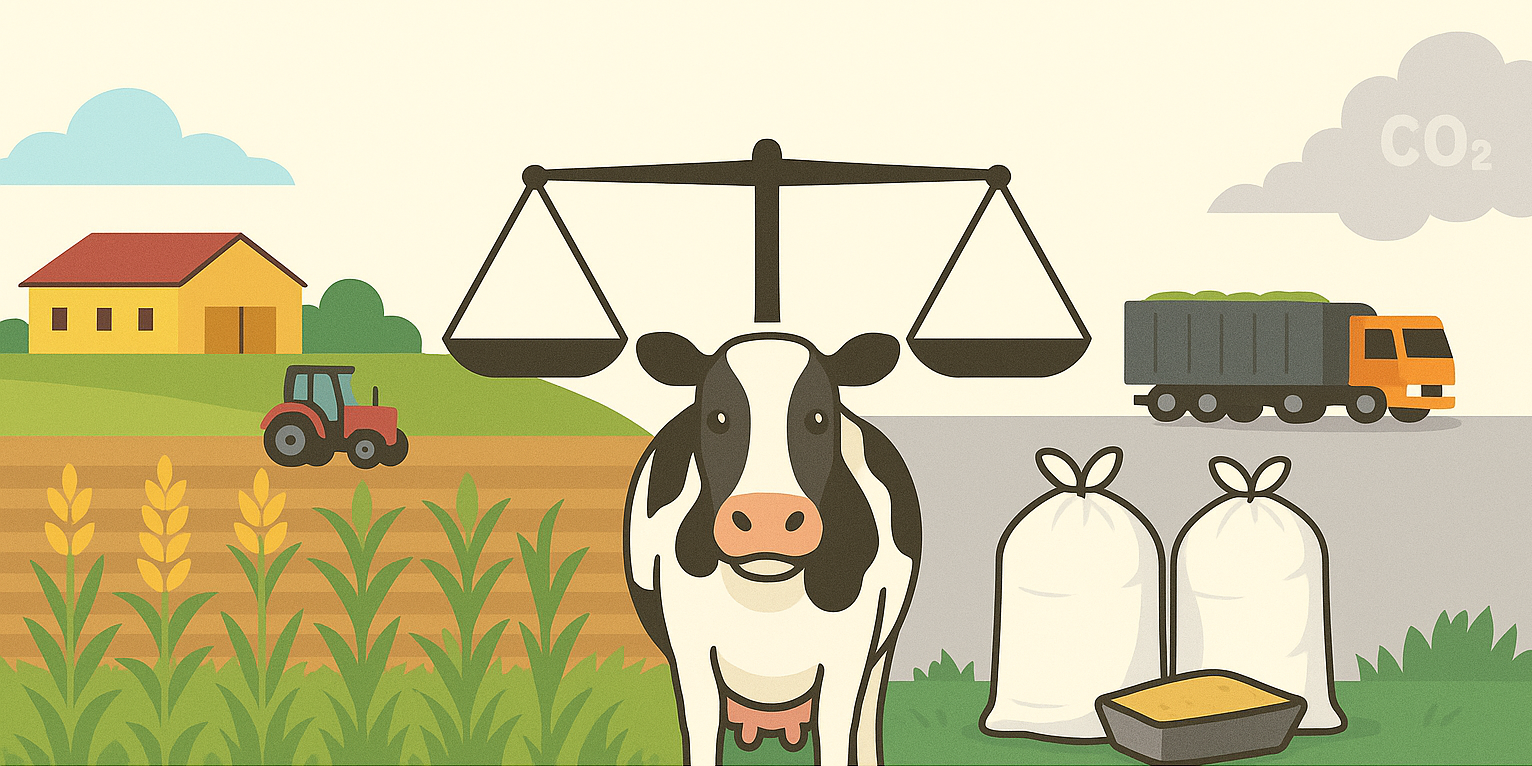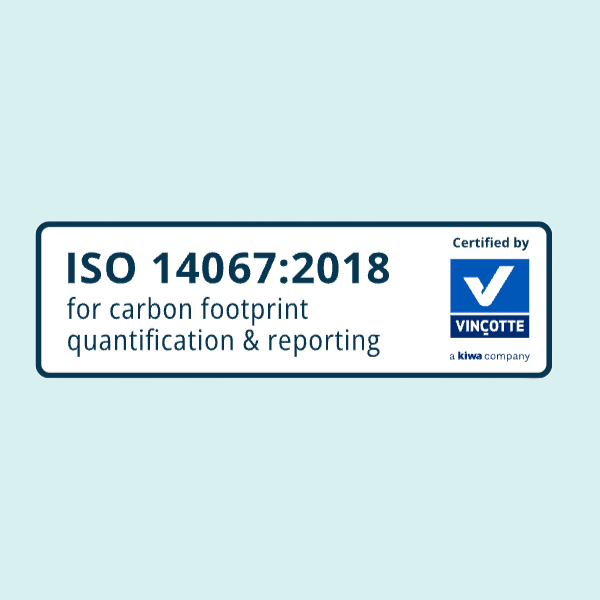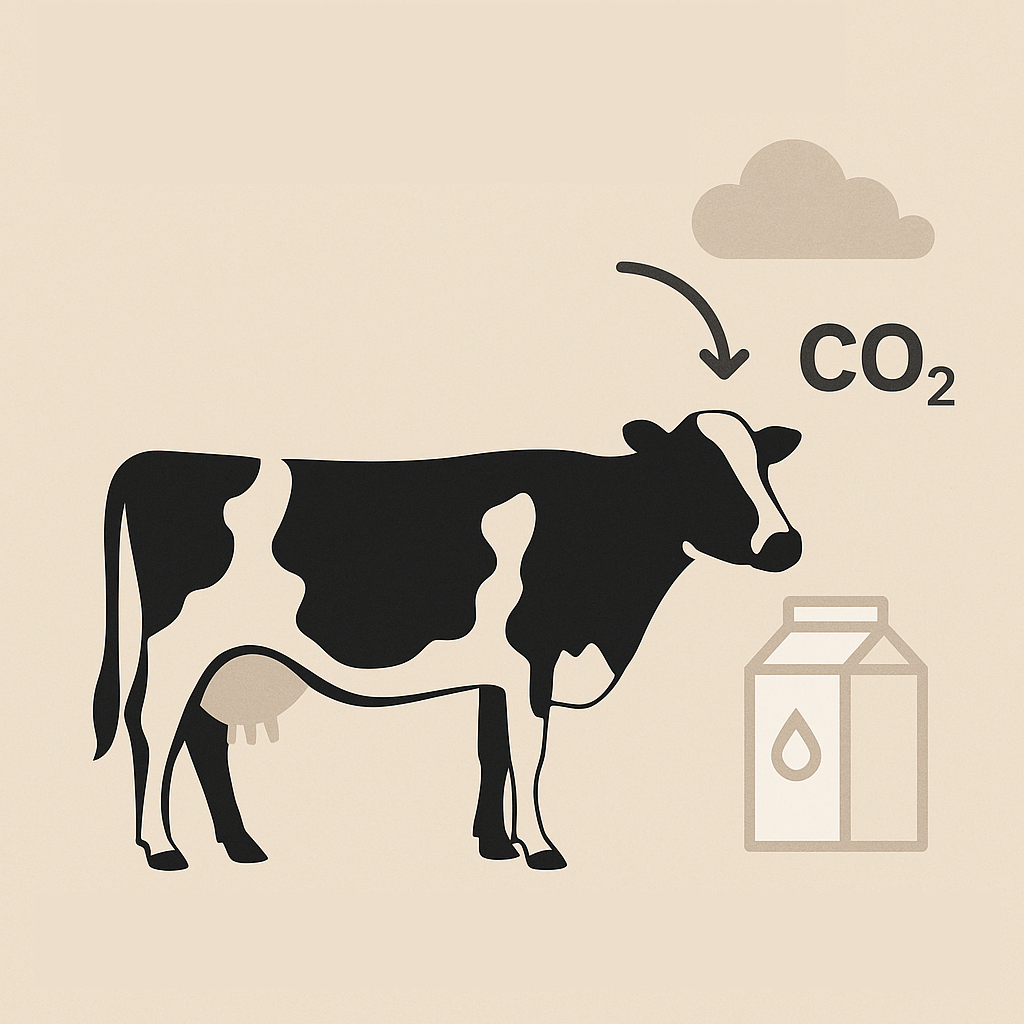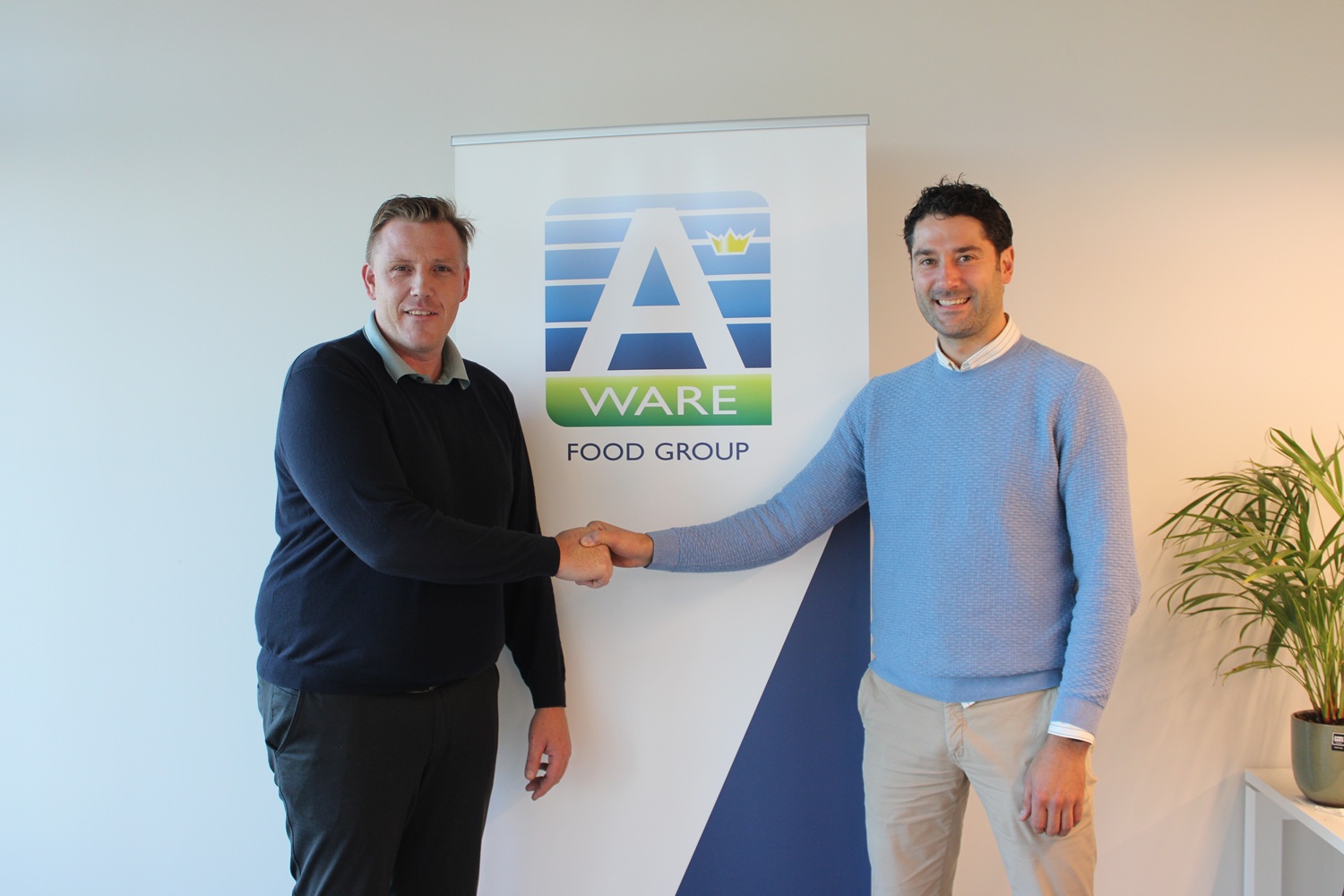In previous articles in the Carbon Footprint series, we already analyzed the footprint of milk on a typical Flemish dairy farm and discussed some scenarios on the road to emission reduction.
High time to look in more detail at how milk's footprint is composed. What gases matter here? What processes contribute to the footprint? And what variables affect emissions from these processes?
An analysis on the impact of dairy farming on the climate problem can be found in the article Milk and climate: the basics and some side notes.
Emission categories
In the Carbon Footprint series, we already introduced the different emission categories under which we group emissions. This article takes a closer look at the emissions under each category.
In the graph below we show emissions on an average dairy farm. These are the preliminary emissions through 2025 from the Farmdesk pilot farm where emissions from enteric fermentation have the largest contribution to the footprint of milk. Then we see emissions of similar magnitude for purchased feeds, home-grown feeds and manure management. Emissions from energy use have by far the lowest impact.
In the rest of the article, we discuss each category separately and also include a graph showing the impact of the various sub-processes on the Farmdesk test operation.
1. Enteric fermentation
On a typical dairy farm, the contribution of emissions from enteric fermentation to the footprint is greatest. The gas released in this process is methane (CH4). This is produced as a byproduct during the fermentation of food by microbial life in the rumen. Obviously, the amount of methane produced in the rumen is largely determined by the amount of dry matter consumed by the animal.
In addition, ration composition and quality also have an impact on emissions from enteric fermentation. Consider the concentration of fibers (NDF) that are rather difficult to break down and give rise to acetic acid formation (C2H4O2) and free-living hydrogen (H2). This free-living hydrogen is in turn converted to methane along with carbon dioxide (CO2) in the rumen.
This while starch, for example, is more likely to give rise to propionic acid formation (C3H6O2) in the rumen, this process just consumes free-living hydrogen which avoids methane.
2. Purchased feeds.
When estimating emissions on a dairy farm, people often look at what happens on their own property. Yet it's important to also consider the emissions associated with the production, processing and transportation of purchased feedstuffs. After all, everything that ends up on the farm has already traveled a path - and during that path, greenhouse gases have often already been released.
The emissions generated from growing your own feed are largely similar to those from purchased feeds. But it doesn't stop there: purchased feeds usually undergo additional steps, such as drying, pressing, mixing or cooling, which requires additional energy and thus creates additional emissions. Transportation, sometimes over thousands of miles, also contributes to the total emissions associated with such feed.
Land use change
Of particular concern are feed materials for which there is land-use change in the country of origin. Consider, for example, soy that comes from areas where rainforests were cleared. When forests disappear, not only are stored CO₂ released from trees and soils, but a natural system that can absorb CO₂ from the air also disappears.
Land use change such as deforestation can significantly increase the climate impact of a feedstuff and thus have an unexpectedly large effect on the overall footprint of milk production.
3. Manure Management
When manure is stored and processed, there are also processes that release greenhouse gases. For this category, these are methane and nitrous oxide (N2O).
Methane
Methane is produced during the decomposition of organic matter (= Dry matter - crude ash) in manure under anaerobic conditions. In this regard, the amount of organic matter in manure depends largely on the amount fed and its digestibility. A higher digestibility results in more absorption through digestion and less excretion of organic matter in the manure.
In turn, the presence of anaerobic conditions is determined by the type of manure storage system. Manure storage systems where slurry is stored, such as the slurry cellar or manure lagoon, are manure storage systems where typically more methane is produced due to anaerobic conditions.
Separation and separate storage of the thick fraction and thin fraction (as well as excretion during grazing) gives rise to more aerobic conditions where, therefore, less methane is usually formed.
Other factors that affect the amount of methane produced from the decomposition of organic matter are the temperature and residence time of manure in the system. Higher temperatures lead to more methane emissions, and longer residence time also causes more organic matter to be converted to methane.
Nitrous oxide
Nitrous oxide is a potent greenhouse gas that can be released when manure is stored and processed. The emissions are partly direct and partly indirect, depending on how nitrogen in manure behaves. An understanding of the nitrogen cycle helps to understand these emissions.
Nitrogen in manure comes from urine (primarily as urea (CH4N2O), which is rapidly converted to ammonium (NH₄+)), solid manure (organic nitrogen from feces) and bedding, feed losses or codigestate that can provide additional nitrogen if incorporated into the manure storage system. Once the manure is stored, a series of microbiological conversions begins where nitrogen can be converted into different forms.
Direct emissions
Under oxygen-rich conditions (such as at the fertilizer surface or after spreading on land), ammonium can be converted to nitrate (NO2-) by bacteria via nitrite (NO3-). This process is called nitrification.
In turn, when nitrate ends up in low-oxygen conditions (such as in thick layers of manure or wet soil), a second process can occur: denitrification. Here, bacteria attempt to convert the nitrate stepwise to nitrogen gas (N2, this gas, unlike N2O, is not a greenhouse gas and some 78 percent of all gases present in the atmosphere are N2). However, if this process is incomplete (for example, with low carbon availability, low humidity or high acidity), the greenhouse gas nitrous oxide may be formed as the final product instead of nitrogen gas. We call this process direct venting of nitrous oxide.
Indirect emissions
In addition to the direct emissions of nitrous oxide, there are also the so-called indirect emissions. On the one hand, we have nitrogen released in gas forms other than nitrous oxide, namely ammonia (NH3) and nitrogen oxides (NO and NO2), which are later converted to nitrous oxide in the environment. Ammonia, like nitrate, also forms from ammonium, especially under alkaline (high pH) conditions, and dissipates rapidly from manure exposed to air. Nitrogen oxides (NOx), in turn, are released as intermediates during nitrification and denitrification .
On the other hand, there can also be leaching of nitrogen, which eventually leads to nitrous oxide emissions when it denitrifies in anaerobic zones in the soil. This leaching occurs mainly in outdoor solid manure storage systems.
4. Homegrown feeds
Growing your own feedstuffs releases greenhouse gases in various ways. In this category, these are nitrous oxide and carbon dioxide, and in some cases, such as when cultivating peatlands, methane.
Nitrous oxide is released through processes very similar to what happens in manure management. When nitrogen is applied to land - through fertilizer, slurry, manure from grazing animals, crop residues or through mineralization of organic matter in the soil - both direct and indirect emissions can occur. In direct emissions, nitrous oxide is formed directly in the soil during denitrification. Indirect emissions occur when nitrogen is first emitted as ammonia or nitrogen oxides, or through leaching of nitrate, which is later converted to nitrous oxide in the environment.
CO2-emissions are then in turn released during liming or by urea administration. During liming, carbonates (such as CaCO3 or CaMg(CO3)2) added to the soil which eventually gives rise to the formation of H2O and CO2. The same process occurs with the addition of urea (CH4N2O). There are also emissions from the burning of fossil fuels by agricultural machinery while tilling the land.
Finally, indirect emissions from purchased products must also be included. Like milk or concentrates, fertilizers, liming agents, seeds, fuels and other agricultural inputs have their own footprints. These also contribute to total emissions from milk.
5. Energy
The consumption of energy also produces emissions, think of the production of electricity and the extraction, processing and transportation of fossil fuels.
On a typical dairy farm, electricity is used for milking, cooling milk, lighting, heating water and separating or digesting manure.
Diesel, in turn, is used for mixing and distributing feed with the feed mixer truck (We classify the consumption of diesel for working land under the category "Own cultivation feeds").
Generating one's own energy on the farm reduces the purchase of energy sources and thus the emissions linked to them.
Note, however, that emissions under the "Energy" category have a limited contribution to the footprint of milk and thus the reduction potential for this category is lower compared to other categories.
